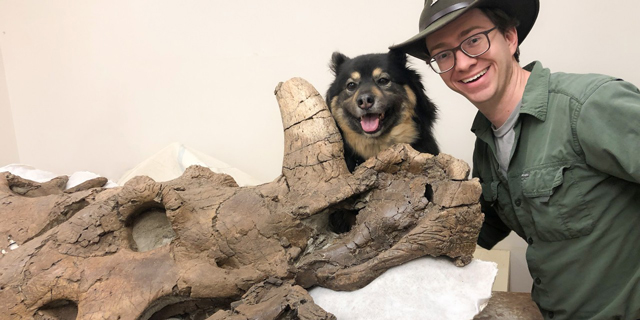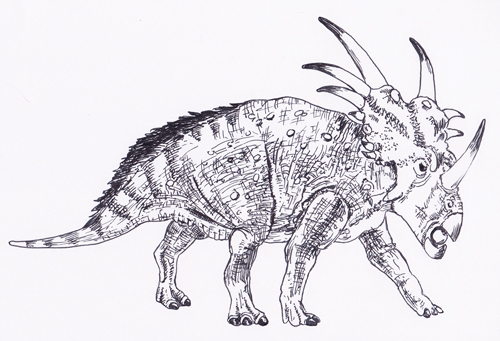Horned Dinosaur Skull – Not Symmetrical
A team of scientists writing in the prestigious journal “Cretaceous Research”, have discovered the beautifully preserved skull of a horned dinosaur. The skull comes from a Styracosaurus, a dinosaur famous for its bony neck frill with spikes. However, the left side of this bony frill looks very different from the right side of the frill. The skull is asymmetrical.
Palaeontologist Scott Persons with the Skull of the Styracosaurus
Picture credit: Scott Persons/University of Alberta
Studying Styracosaurus
When scientists want to display a dinosaur in a museum, they often produce mirror images of bones to replace missing parts of the skeleton. For example, if the right thigh bone is found but not the left, then a mirror image of the right thigh bone can be produced and used in the mounted display. The discovery of this asymmetrical dinosaur skull demonstrates that the heads of dinosaurs could look very different. The right side of the head looks very different from the left. This has implications for how dinosaurs can be displayed in museums – producing mirror images of bones from the skull might not be as good an idea as previously thought.
A Styracosaurus Drawing
Picture credit: Everything Dinosaur
The illustration (above) is based on the CollectA Deluxe Styracosaurus model.
To view this range: CollectA Age of Dinosaurs Deluxe Range.
In addition, such variability in the skull and the way that it looks casts doubt over how some dinosaur species get named. Sometimes a new species is erected based on subtle variations in the shape and structure of the skull. If the dinosaurs had such extensive variations in the shape of the skulls, as this Styracosaurus fossil suggests, then some dinosaur species might be invalid.
The Everything Dinosaur website: Everything Dinosaur.



